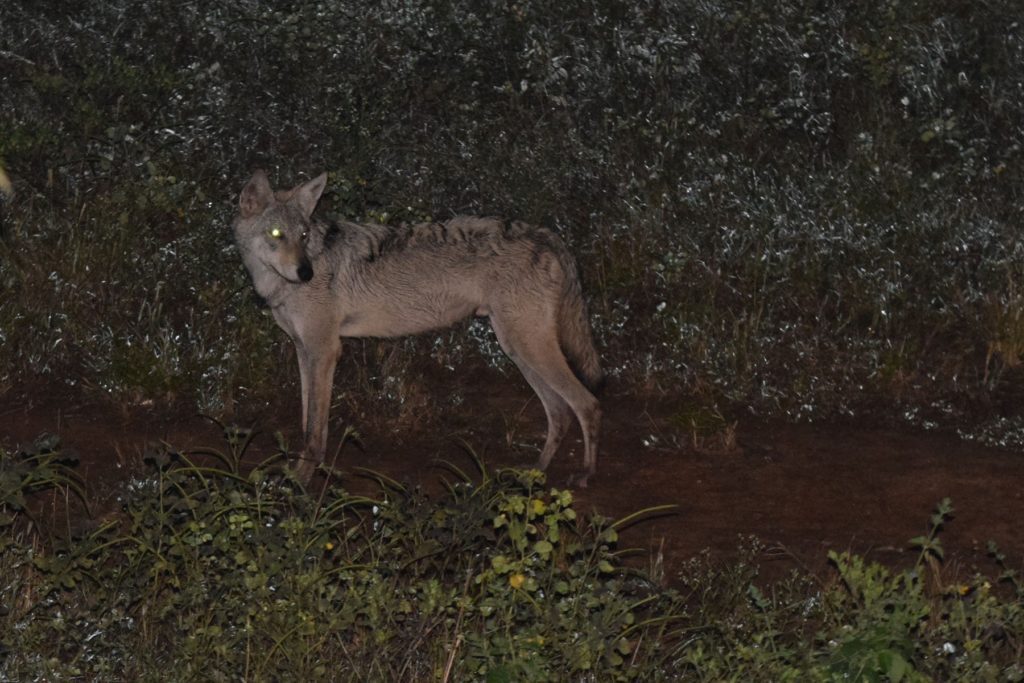Best Place to See Wolves in India | Facts about Wolves
Wolves are an extremely social and enigmatic species. Unfortunately, this elusive predator has been unnecessarily defamed by mythology.
They display love, affection, and bonding towards each other, thereby making them the most powerful pack hunters.
One of the largest and most widely distributed megafauna in the Indian sub-continent; wolves are believed to have evolved from the group of Miacid that is, the extensional family of the carnivores superfamily, Miacoidea.
Evolution of Wolves
Miacids were low-limbed, dog-shaped, long-body, lengthy-tailed carnivores, which existed about 50 million years ago. Miacids were known to be the first canids of the world which were also related to the first feline species e.g. Tiger.
It was about 20 million years ago when miacid fragmented into two different families; Canines and Felines. Studies show that the first ancestors of Canids were recorded about two to three million ago.
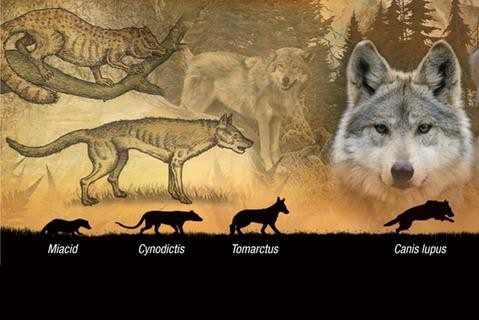
Source: Little big history of Canine
The first Gray Wolf (Canis lupus) appeared in Eurasia about 750,000 years ago and then migrated to North America.
Another cousin of the wolf (Canis Dirus) commonly known as The Dire Wolf evolved about 400,000 years ago, and they both co-existed in North America. The Dire wolf became extinct 7,000 years ago, and thereafter the Gray wolf came in the supreme power and still continues to rule the woods of North America.

This enigmatic yet nomadic species is often misunderstood as being wild, or domesticated like dogs as they occupy human-dominated spaces, which makes them the most vulnerable species.
We share with you some of the interesting and extraordinary characteristics of the world’s most unique predator.
Wolves of India
This intelligent animal has two subspecies of Canis lupus found in India.
One of the wolves which are spread across peninsular India is the Indian Gray Wolf (Canis lupus pallipes), and the other which is found in the Upper Trans- Himalayan range is the Himalayan wolf or Tibetan wolf (Canis lupus chanco).
Wolves are known for their speed and can run up to 45 km/hour. Being a natural predators; they tend to prey mainly on rodents, hares, and livestock. However, when targeting bigger prey for example an antelope, their keen senses, powerful jaws, and mass endurance helps them to take down the prey within a few fleeting minutes.
Wolves generally live in a pack of 6-8 individuals that requires a bigger home range of about 180-200 sq. km.
Indian Gray Wolf
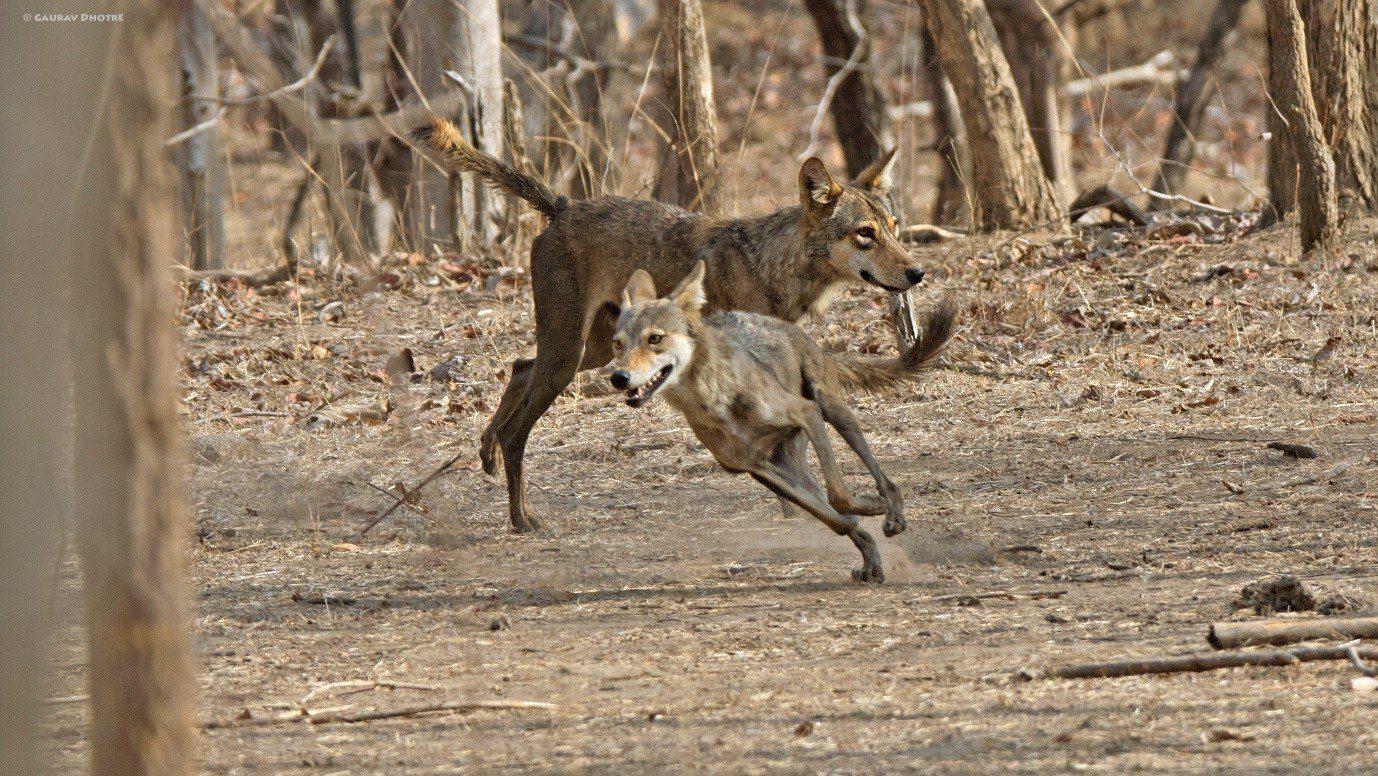
Indian Gray Wolf, regionally known as Bheriya, Hundar, Nekral (in Hindi)/ Landga (in Marathi, Bhagad (Kutchhi), Tholla (in Kannada); are widely distributed in the parts of Rajasthan, Gujarat, Karnataka, Madhya Pradesh, Maharashtra and Andhra Pradesh.
The gray wolf is a medium-sized, slender-looking canid, with the shade of taupe to brownish-white coat, streaked with black hair on top, with underparts in white. They have short and thin fur which helps them to survive in the scorching summers.
Their habitat ranges from grasslands, thorn forests to scrublands. Known to be the top predator of the grassland, this gangly predator is listed as an endangered species by Schedule I of the Indian Wildlife Protection Act, 1972, as hunting remains one of the major unsettled issues in India.
The Himalayan Wolf
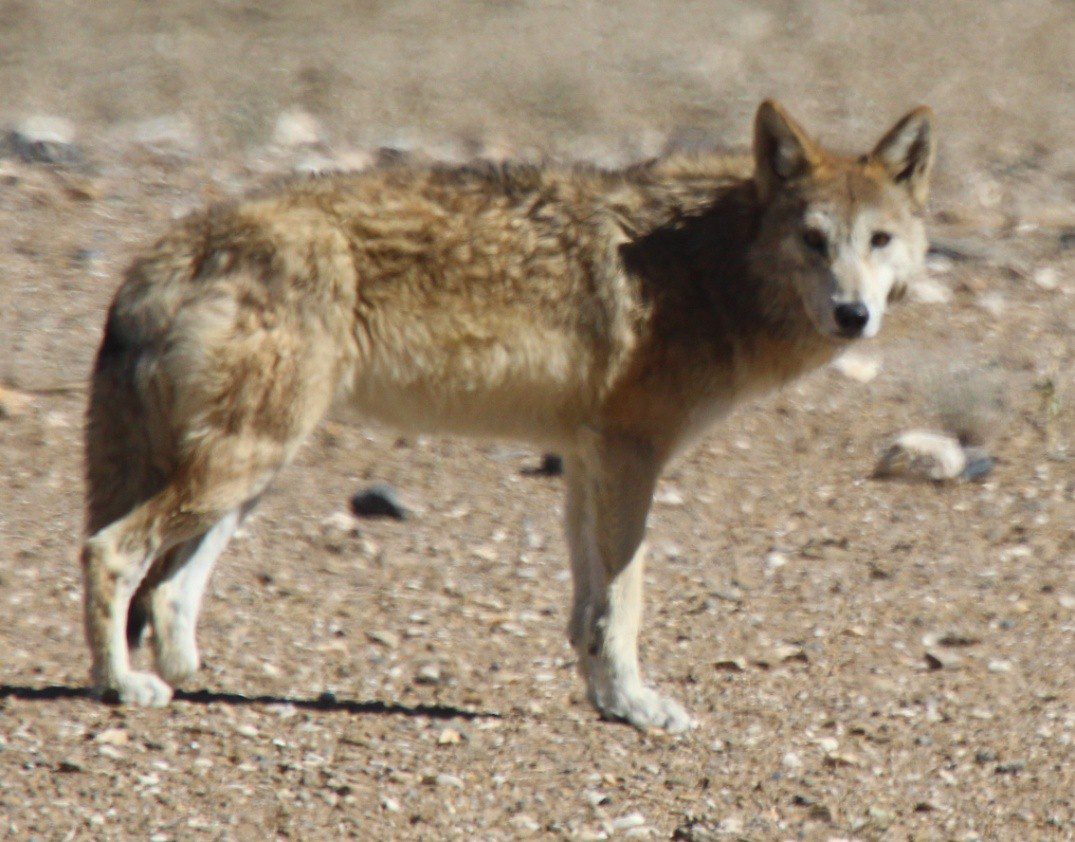
The Himalayan Wolf or the Tibetan Wolf is the other wolf that evolved around 800,000 years ago; regionally known as Changu (Tibetan) and Rame hoon (in Kashmiri). They roam the wastelands of the upper-trans Himalayan range which include Himachal Pradesh, Jammu, Kashmir, Uttarakhand, and Sikkim.
Generally bigger in size than their peninsular facsimile, the Himalayan Wolf possesses a genetic adaptation to withstand the harsh environment. This elusive species lives in smaller packs or in a pair. They eat marmots, goats, hares, and Bharal (The Himalayan Blue Sheep).
Their population is still unknown as they roam in the no man’s land, and are not so territorial. Wolves have natural enemies as they sit on top of the food chain when it comes to the wasteland. However, declining prey base and starvation become the major cause of death. Mankind also plays a major role in shredding their population, as they are the biggest threat to their livestock. This agile creature is an endangered species and is being placed in Schedule I of the Wildlife Protection Act, of 1972.
Facts about Wolves
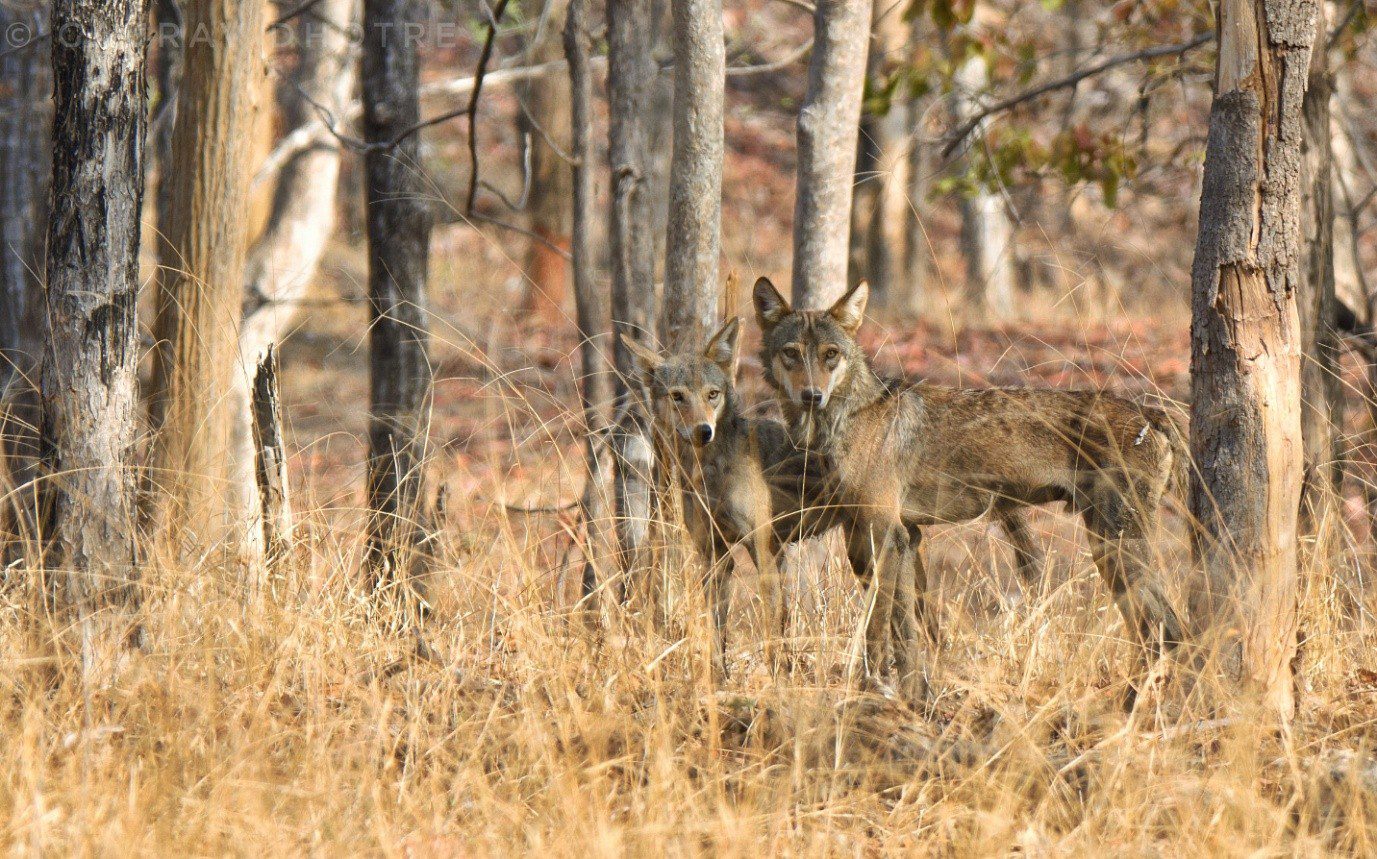
1. Being a monogamous species, they develop a very strong bond with their unit. They have been known to sacrifice their lives for their pack.
2. Hierarchy matters when it comes to wolves. The dominant male will be the first one to feed on the prey, followed by other pack members.
3. Wolves can eat large amounts of about 9 kg in just one sitting. This works like a survival tactic as they never know when they’ll get to feast again.
4. Wolves communicate with different vocalizations and scent-marking. Howling is another form of communication that helps them stay close to their pack. However, wolves which are found in India rarely howl.
5. You must have heard about “Werewolf”. Adolph Hitler was so fascinated with wolves that he used code names such as “Herr Wolf”, “Conductor Wolf”, and “Werewolf” for his military headquarters.
6. Wolves which are found in India are the smallest ones and they only grow up to 3 feet long.
7. Japanese called wolf as “Ookami” meaning the “Great God” in their language. Similarly in Roman mythology wolves are characterised as the God of War and Agriculture.
Best Places to See Wolves in India
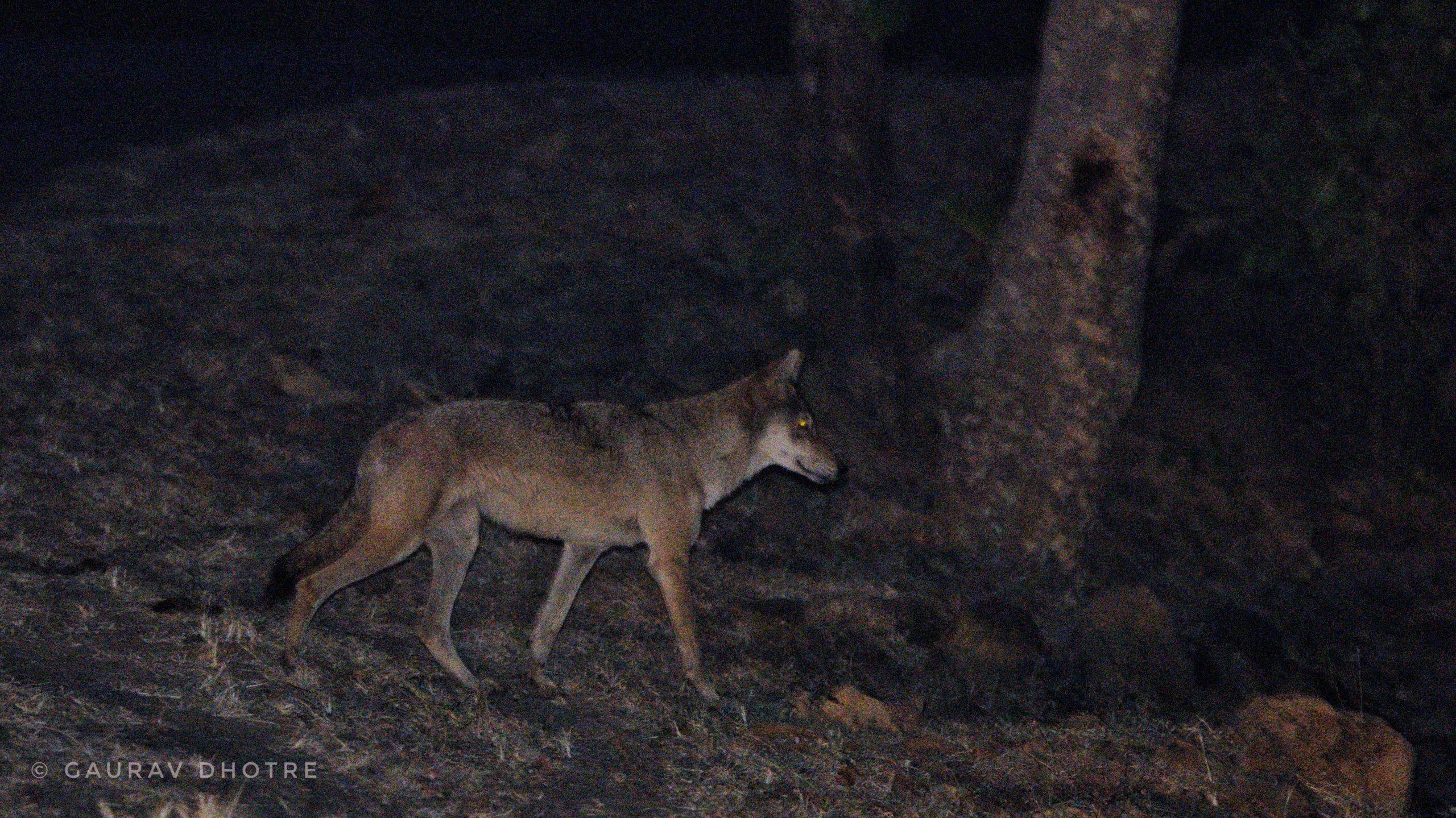
Since wolfs are a highly fragmented species, there are few places where you can sight these fleeting beauties.
A few regions like Pench National Park, Nauradehi Wildlife Sanctuary Blackbuck National Park, Kutch Bustard Sanctuary, Kailadevi Wildlife Sanctuary, Mount-Abu Wildlife Sanctuary, and Todgarh Raoli Sanctuary offer some amazing sightings. In Trans-Himalayan Range, Hemis National Park, Dachigam National Park, Changthang Wildlife Sanctuary, and Kibber Wildlife Sanctuary are known for good sightings.
Despite the highest level of protection, people have forgotten to live in harmony with wildlife, which put these magnificent creatures at such a high risk. This lesser-spoken-about species is not as much in limelight, due to its hidden habitat between the agricultural fields.
Let’s together recognize and value the importance of man and wild relationships, which can help play a key role in conserving these stunning, precious species.
Written by: Himani Singh Chouhan, Denwa Backwater Escape
Phtoto Credits: Gaurav Dhotre, Naturalist Pench Tree Lodge.
Visit our lodges in Kanha, Bandhavgarh, Pench, Satpura, and Panna to watch various fascinating species of the forests frolic in the untamed wild. Get in touch with our trip curators at Pugdundee Safaris to book your next wildlife holiday.
Our trip curators at Pugdundee Safaris are more than happy to assist you. Phone: +91-011-40132680 Email: [email protected]

